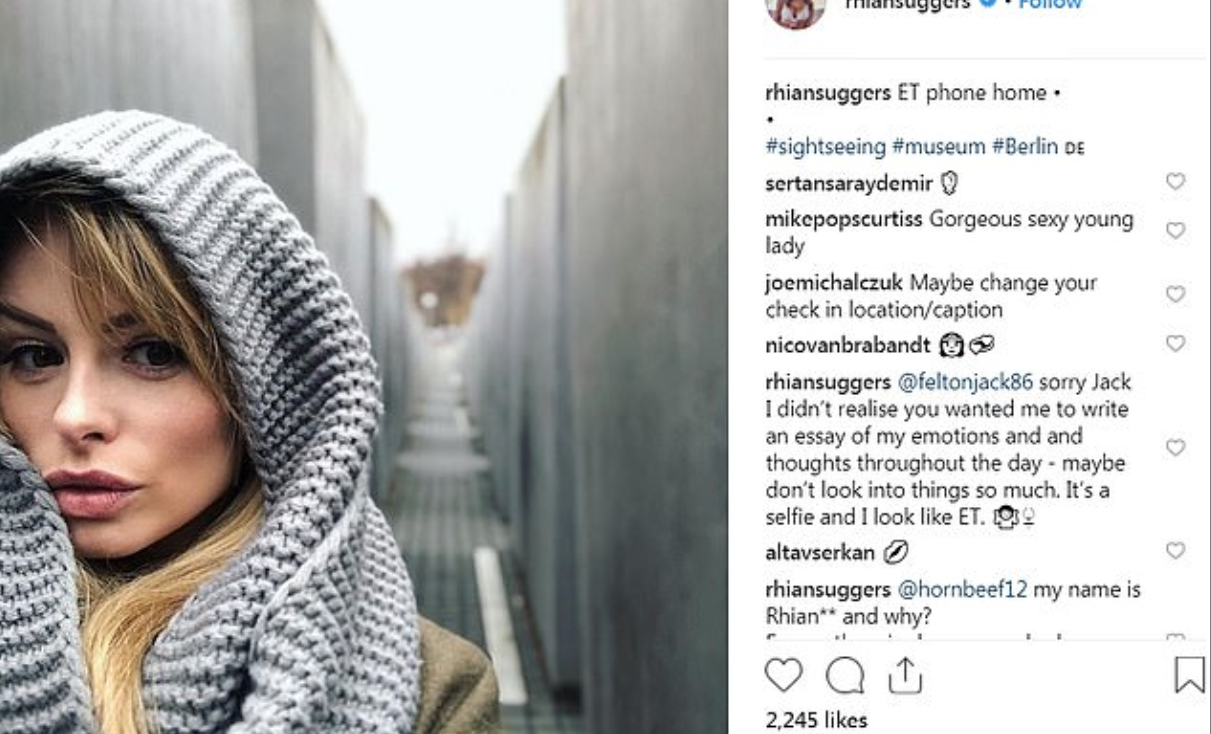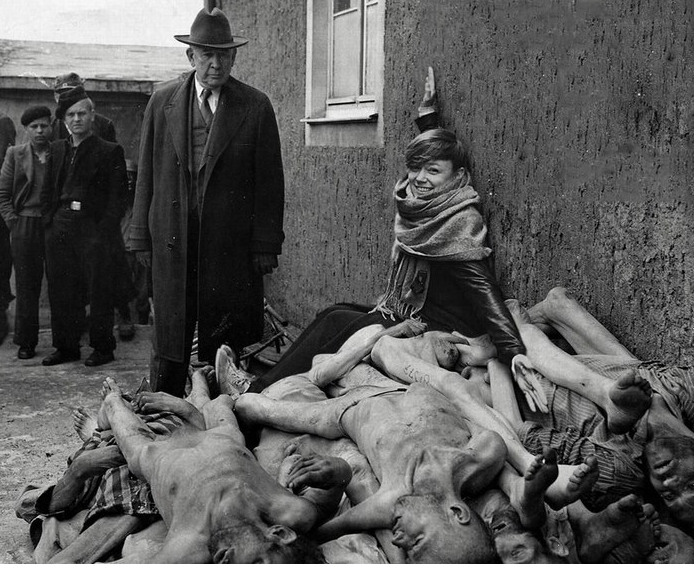British model criticised for posting Holocaust Memorial selfie
Rhian Sugden caused controversy with her ‘narcissistic’ Instagram post

Your support helps us to tell the story
From reproductive rights to climate change to Big Tech, The Independent is on the ground when the story is developing. Whether it's investigating the financials of Elon Musk's pro-Trump PAC or producing our latest documentary, 'The A Word', which shines a light on the American women fighting for reproductive rights, we know how important it is to parse out the facts from the messaging.
At such a critical moment in US history, we need reporters on the ground. Your donation allows us to keep sending journalists to speak to both sides of the story.
The Independent is trusted by Americans across the entire political spectrum. And unlike many other quality news outlets, we choose not to lock Americans out of our reporting and analysis with paywalls. We believe quality journalism should be available to everyone, paid for by those who can afford it.
Your support makes all the difference.British model Rhian Sugden prompted criticism after posting a selfie from the Holocaust Memorial in Berlin on Instagram accompanied by the caption “ET phone home”.
After considerable backlash online from followers who thought the photo was bad taste, Sugden removed the caption, leaving the hashtags #sightseeing #museum and #Berlin.
However, the lingerie model defended the post online, writing: “I’ve got no time for this moaning generation. I’m on holiday. Sightseeing and took a pic. Under no circumstances is this disrespectful.”
The picture shows Sugden pouting and wearing a chunky grey scarf draped around her head with the memorial, which consists of 2,711 concrete slabs arranged in a grid, in the background.
She responded to one critique of the caption by writing: “Maybe don’t look into things so much. It’s a selfie and I look like ET.”
“Imagine having such little respect for the millions of people murdered during the Holocaust that you think this is appropriate,” commented one critic. “What an embarrassment of a human.”
Another labelled her a “narcissist” for posting “silly pouting/duck faces at a Holocaust Memorial”.
Sugden defended herself further on Twitter: “This is insane! I posted a pic of me sightseeing in Berlin – took a pic at a memorial and made a comment that I look like ET – the abuse I got is mental,” she wrote.
“Had lots of messages, mainly from Jewish people, who have gone out of their way to let me know that they are in no way offended by my selfie in Berlin.

“If I did offend anyone it wasn’t my intention.
“I think for people to rip me to pieces like they have you are the ones that should be ashamed of yourselves. I meant no harm of malice. Glad most of you can see that.”
It’s not the first time tourists have caused outrage with controversial photos. In 2016 Israeli artist Shahak Shapira highlighted the disparity between visitors’ grinning selfies and the reason behind the Holocaust Memorial in a project called “Yolocaust”.
He photoshopped people’s pictures of themselves smiling, jumping and even doing handstands while visiting onto piles of dead bodies in concentration camps, or with stick thin prisoners in the background.

“About 10,000 people visit the Memorial to the Murdered Jews of Europe every day. Many of them take goofy pictures, jump, skate or bike on the 2,711 concrete slabs of the 19,000 m² large structure,” Shapira wrote. “The exact meaning and role of the Holocaust Memorial are controversial. To many, the grey stelae symbolise gravestones for the six million Jews that were murdered and buried in mass graves, or the grey ash to which they were burned to in the death camps.”
In 2009, easyJet came under fire for using the site as the backdrop for a fashion shoot in its inflight magazine. Every issue was pulled after numerous complaints from passengers and Jewish organisations across Europe.
Join our commenting forum
Join thought-provoking conversations, follow other Independent readers and see their replies
0Comments